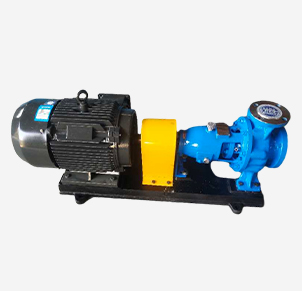English
- Afrikaans
- Albanian
- Amharic
- Arabic
- Armenian
- Azerbaijani
- Basque
- Belarusian
- Bengali
- Bosnian
- Bulgarian
- Catalan
- Cebuano
- Corsican
- Croatian
- Czech
- Danish
- Dutch
- English
- Esperanto
- Estonian
- Finnish
- French
- Frisian
- Galician
- Georgian
- German
- Greek
- Gujarati
- Haitian Creole
- hausa
- hawaiian
- Hebrew
- Hindi
- Miao
- Hungarian
- Icelandic
- igbo
- Indonesian
- irish
- Italian
- Japanese
- Javanese
- Kannada
- kazakh
- Khmer
- Rwandese
- Korean
- Kurdish
- Kyrgyz
- Lao
- Latin
- Latvian
- Lithuanian
- Luxembourgish
- Macedonian
- Malgashi
- Malay
- Malayalam
- Maltese
- Maori
- Marathi
- Mongolian
- Myanmar
- Nepali
- Norwegian
- Norwegian
- Occitan
- Pashto
- Persian
- Polish
- Portuguese
- Punjabi
- Romanian
- Russian
- Samoan
- Scottish Gaelic
- Serbian
- Sesotho
- Shona
- Sindhi
- Sinhala
- Slovak
- Slovenian
- Somali
- Spanish
- Sundanese
- Swahili
- Swedish
- Tagalog
- Tajik
- Tamil
- Tatar
- Telugu
- Thai
- Turkish
- Turkmen
- Ukrainian
- Urdu
- Uighur
- Uzbek
- Vietnamese
- Welsh
- Bantu
- Yiddish
- Yoruba
- Zulu
Telephone: +86 13120555503
Email: frank@cypump.com
Jul . 28, 2024 18:34 Back to list
Choosing the Right Water Pump for Your Septic Tank System Efficiency and Performance
Understanding Septic Tank Water Pumps
Septic systems are essential for managing wastewater in areas not serviced by central sewer lines. These systems rely on a septic tank, which treats wastewater through a combination of physical, biological, and chemical processes. One critical component of this system is the septic tank water pump, designed to move wastewater safely and efficiently. Understanding its function, maintenance, and types is essential for homeowners relying on septic systems.
What is a Septic Tank Water Pump?
A septic tank water pump is a submersible or effluent pump installed in the septic tank or in an absorption field to transport wastewater to a drain field or secondary treatment area. This pump is particularly important in systems where gravity alone cannot move the wastewater to the designated disposal area due to topography or other site-specific conditions.
How Does It Work?
The septic tank collects and holds the wastewater from household sources. Within the tank, solid waste settles at the bottom, allowing liquids to rise. As the tank fills, the water pump activates, pushing the effluent out of the tank and into the drainage field. This process helps prevent overflows and backs up sewage, allowing for proper wastewater treatment and dispersal.
Types of Septic Tank Water Pumps
1. Effluent Pumps These pumps are specifically designed to move the liquid waste from the septic tank to the drain field. They can handle some solid waste, although not all, so they are often used in systems where solids have already settled and clarified effluent is present.
2. Grinder Pumps In situations where the wastewater has a high solid content, a grinder pump may be necessary. This type of pump shreds solid waste into smaller particles, allowing it to be effectively pumped through the system.
septic tank water pump

Importance of Maintenance
Regular maintenance of the septic tank and its components, including the water pump, is crucial for the longevity and efficiency of the system. Homeowners should schedule routine inspections to check for blockages, wear, and tear, and to ensure the pump operates correctly. Common maintenance practices include
- Pump Cleaning Septic tanks need to be pumped out regularly to remove accumulated solids. The frequency depends on tank size and household usage—generally every 3-5 years.
- Check Valve Inspection This valve prevents backflow and should be checked regularly to ensure it is working effectively.
- Power Supply Checks Since septic water pumps are powered electrically, ensuring a reliable power source is key to preventing pump failures.
Signs of Problems
Identifying issues early can prevent costly repairs and health hazards. Signs that your septic tank water pump may need attention include
- Backed-up Drains Slow or clogged drains could indicate pump failure. - Unpleasant Odors Foul smells around the septic system may signal leaks or pump malfunctions. - Sewage Puddles Visible wastewater accumulation near the septic tank or drain fields is a clear indication of trouble.
Conclusion
Septic tank water pumps are a vital part of maintaining an effective wastewater management system in areas outside of municipal sewer services. Understanding their function, types, maintenance needs, and potential issues helps homeowners effectively manage their septic systems. Regular maintenance and prompt attention to problems are crucial to ensure the continued functionality of both the pump and the entire septic system, safeguarding both the environment and public health.
-
ISG Series Vertical Pipeline Pump - Chi Yuan Pumps Co., LTD.|High Efficiency, Energy Saving, Low Noise
NewsJul.30,2025
-
ISG Series Vertical Pipeline Pump- Chi Yuan Pumps|High Efficiency&Low Noise
NewsJul.30,2025
-
ISG Series Vertical Pipeline Pump-Chi Yuan Pumps Co., LTD.|High Efficiency&Energy Conservation
NewsJul.30,2025
-
ISG Series Vertical Pipeline Pump - Chi Yuan Pumps Co., LTD.|Advanced Hydraulic Design&Energy-Efficient Solutions
NewsJul.30,2025
-
ISG Series Vertical Pipeline Pump - Chi Yuan Pumps Co., LTD.
NewsJul.30,2025
-
ISG Series Vertical Pipeline Pump - Chi Yuan Pumps Co., LTD.|energy-efficient fluid handling&industrial durability
NewsJul.30,2025










